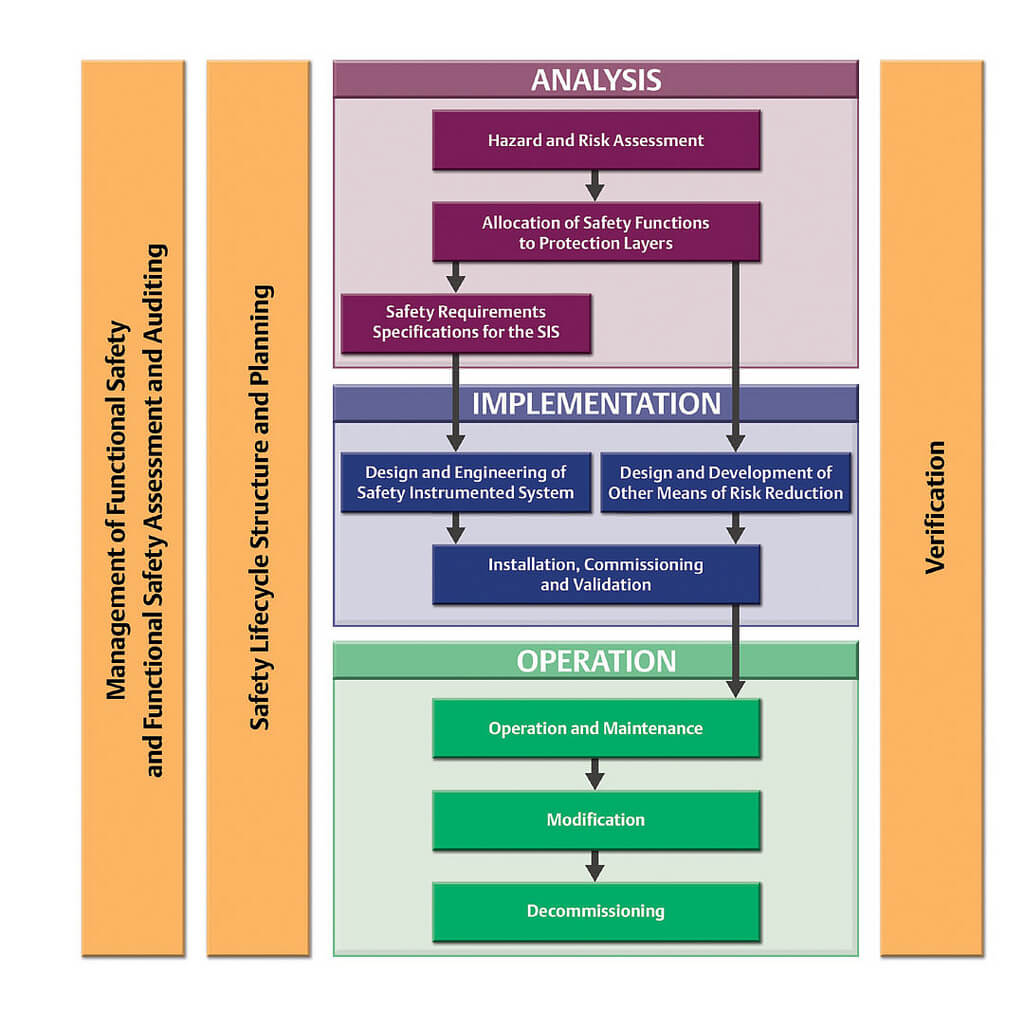I received a great question about the application of the IEC 61511 safety lifecycle. The person noted that a question was raised after the safety integrity level (SIL) study and safety requirements specification (SRS) had been performed. The question is about the verification of these and who would need to perform them.
I turned to Emerson’s Russell Cockman on the SIS [safety instrumented system] Functional Safety Consulting team, for his thoughts and his help in responding to this question. Russell explained that first there is general verification, which is part of functional safety management and must be planned into the entire lifecycle. This is addressed mainly in clause 7 (verification) of the IEC 61511 standard.Verification is the checking of each and every activity to see that the established objectives were met. It can be a review, test, inspection, checklist or any other type of check, which is appropriate to the activity. The theory is never to pass on the output of an activity to the next until you have verified its correctness.
This type of verification should be planned as part of functional safety planning. So, for every activity you know what you need to do and how to verify it. There is no requirement for a specific level of independency for a verification, it should be appropriate for the activity and complexity.
For the example of the SRS in this question, Russell sees only one answer. The process designer and operator must jointly agree that the safety requirements have been addressed correctly in the document and ultimately the Duty Holder, usually the operator, is responsible and must bear the risk. They are the final verifier.
Russell offered a second consideration. There is a specific form of verification referred to as SIL or SIF (safety instrumented function) verification. This is where each safety function is reviewed for compliance with the required SIL for the SIF specifically including Systematic Integrity, Random Integrity and Architectural constraints. This will be a separate exercise and separate report. There is no specific requirement for this to be reviewed with any degree of independence, as a third party is often involved in writing the report.
Russell and the SIS Functional Safety Consulting team can assist with these activities and share their experiences in working with others to support their IEC 61511 safety lifecycle efforts.
You can also connect and interact with other functional safety experts in the Safety Instrumented Systems group in the Emerson Exchange 365 community.






